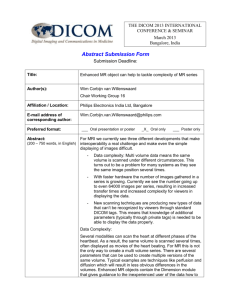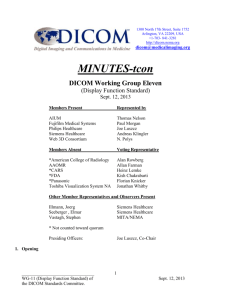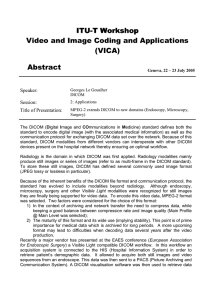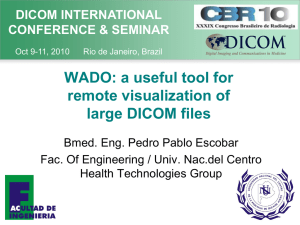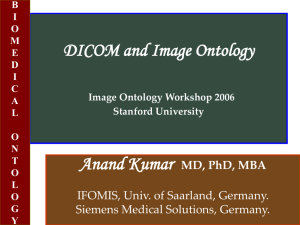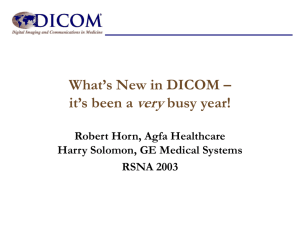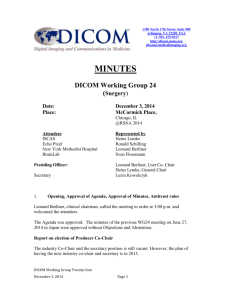Technology Overview
advertisement
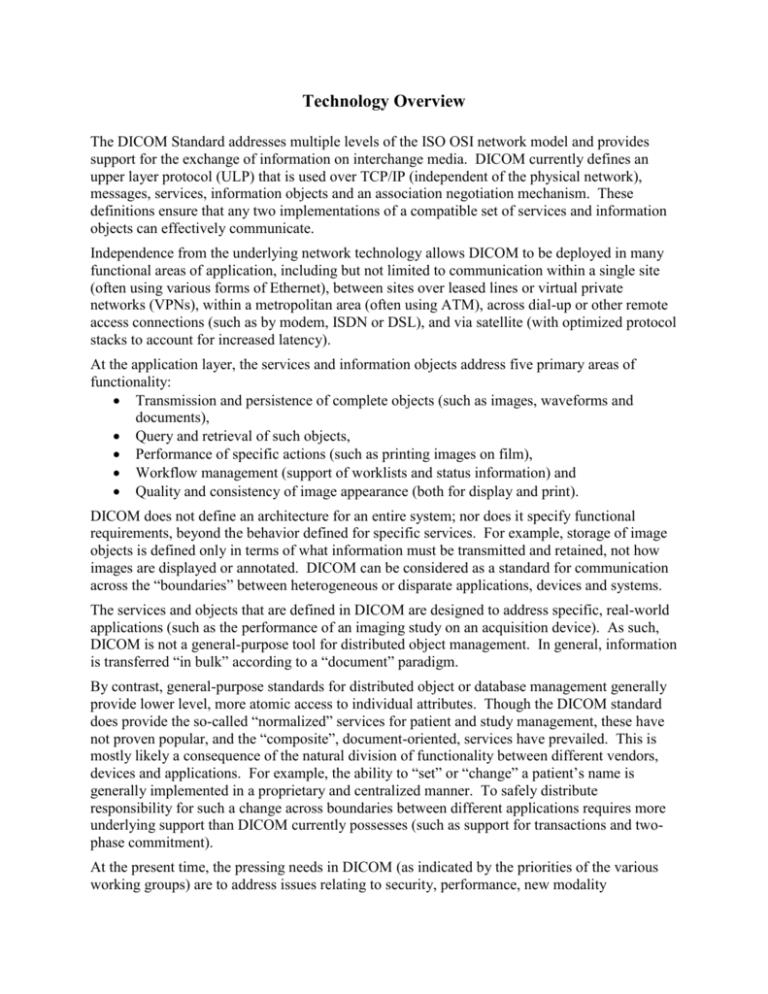
Technology Overview The DICOM Standard addresses multiple levels of the ISO OSI network model and provides support for the exchange of information on interchange media. DICOM currently defines an upper layer protocol (ULP) that is used over TCP/IP (independent of the physical network), messages, services, information objects and an association negotiation mechanism. These definitions ensure that any two implementations of a compatible set of services and information objects can effectively communicate. Independence from the underlying network technology allows DICOM to be deployed in many functional areas of application, including but not limited to communication within a single site (often using various forms of Ethernet), between sites over leased lines or virtual private networks (VPNs), within a metropolitan area (often using ATM), across dial-up or other remote access connections (such as by modem, ISDN or DSL), and via satellite (with optimized protocol stacks to account for increased latency). At the application layer, the services and information objects address five primary areas of functionality: Transmission and persistence of complete objects (such as images, waveforms and documents), Query and retrieval of such objects, Performance of specific actions (such as printing images on film), Workflow management (support of worklists and status information) and Quality and consistency of image appearance (both for display and print). DICOM does not define an architecture for an entire system; nor does it specify functional requirements, beyond the behavior defined for specific services. For example, storage of image objects is defined only in terms of what information must be transmitted and retained, not how images are displayed or annotated. DICOM can be considered as a standard for communication across the “boundaries” between heterogeneous or disparate applications, devices and systems. The services and objects that are defined in DICOM are designed to address specific, real-world applications (such as the performance of an imaging study on an acquisition device). As such, DICOM is not a general-purpose tool for distributed object management. In general, information is transferred “in bulk” according to a “document” paradigm. By contrast, general-purpose standards for distributed object or database management generally provide lower level, more atomic access to individual attributes. Though the DICOM standard does provide the so-called “normalized” services for patient and study management, these have not proven popular, and the “composite”, document-oriented, services have prevailed. This is mostly likely a consequence of the natural division of functionality between different vendors, devices and applications. For example, the ability to “set” or “change” a patient’s name is generally implemented in a proprietary and centralized manner. To safely distribute responsibility for such a change across boundaries between different applications requires more underlying support than DICOM currently possesses (such as support for transactions and twophase commitment). At the present time, the pressing needs in DICOM (as indicated by the priorities of the various working groups) are to address issues relating to security, performance, new modality technology, and workflow management. These needs are being successfully addressed using the conventional “underlying” DICOM technology. Where there are interfaces to standards based on other technologies (such as HL7 V2.x and 3), the focus for harmonization is on a shared “information model”. It may be the case that the nature of the underlying technology needs to be revisited in the future, whether it is to make use of more sophisticated off-the-shelf distributed object management tools such as CORBA, or less sophisticated encoding tools such as XML. However, the current priority is to address improvements in functionality to better meet the needs of the end-user, rather than to adopt an alternative technology for the sake of it. This priority is continually reinforced by a desire to remain compatible with the installed base of equipment. When specific new technology is required, such as in support of new features such as security and compression, the strategy is to adopt proven international, industry or de facto standards. Accordingly, network confidentiality and peer authentication in DICOM are provided by the use of either TLS (an Internet standard) or ISCL (an ISO-based standard). Similarly, rather then develop medical-image-specific compression schemes, DICOM adopts standards developed by ISO/IEC JTC 1/SC 29/WG 1 such as JPEG and JPEG 2000. For interchange media, standard file systems compatible with conventional software (such as ISO 9660 and UDF) are used.
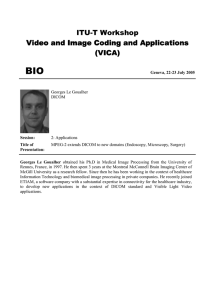
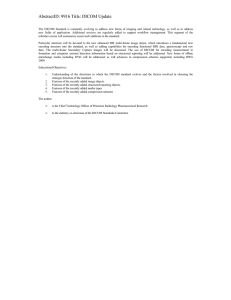

![[#MIRTH-1930] Multiple DICOM messages sent from Mirth (eg 130](http://s3.studylib.net/store/data/007437345_1-6d312f9a12b0aaaddd697de2adda4531-300x300.png)
